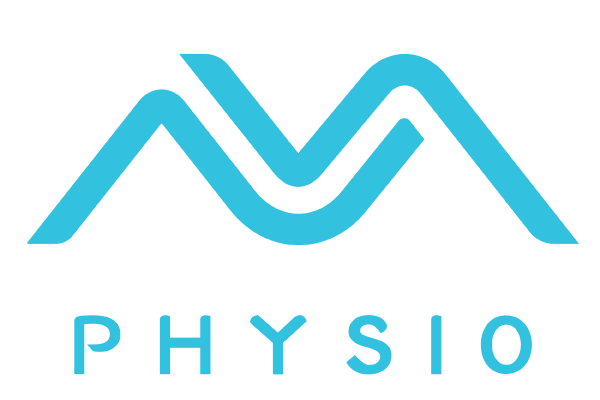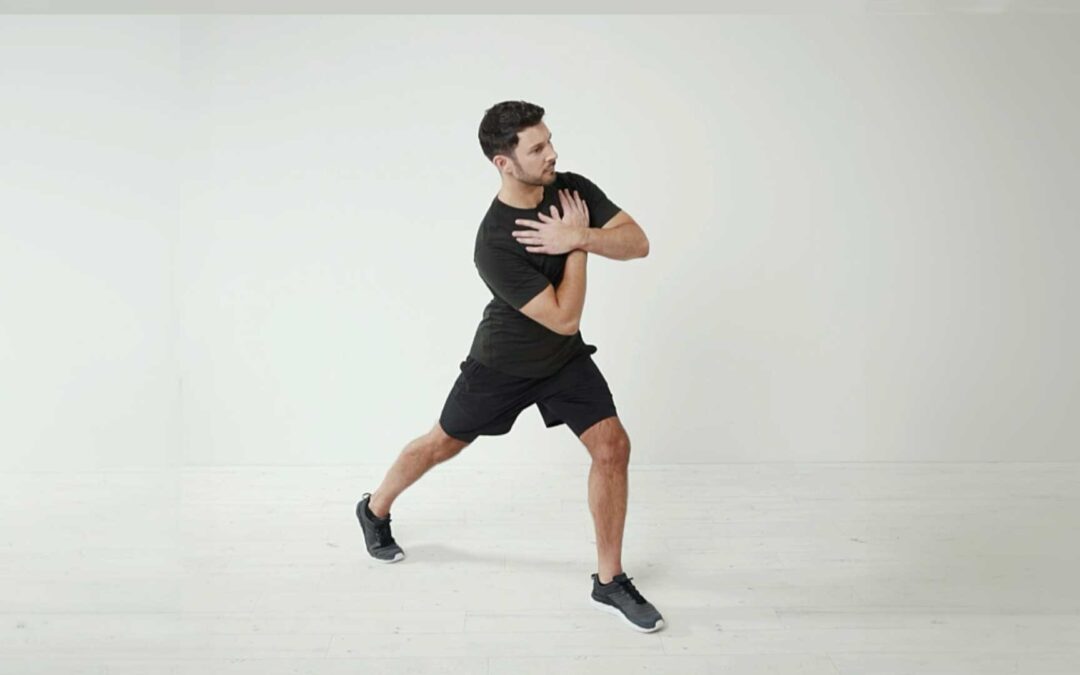What is the Side Lean Exercise?
The Side Lean Exercise targets the oblique muscles on the side of your body. It involves lying on one side and lifting your upper body off the ground while keeping your hips pressed to the floor. This exercise helps to sculpt a narrow waist and toned abs. You can perform it with or without weights, and can modify the difficulty by changing the angle of the bench or increasing the weight. It’s important to maintain proper form to prevent injury and get the most out of the exercise.
How to Perform Side Lean Exercise?
- Begin with feet shoulder-width apart, maintaining an upright stance.
- Slide the non-weight bearing foot back, lifting the heel for balance, arms crossed over the chest.
- Lean the trunk sideways from the front leg, pausing at each movement before returning.
- Keep the trunk upright, head aligned with the spine, and focus on leaning over while pushing the opposite hip away.
- Ensure most body weight is on the front leg, with the knee and front foot always facing forward.
- For added difficulty, use a chest weight.
- Breathe continuously, avoiding breath-holding, and perform within your comfort and as advised by your physiotherapist.
How Physiotherapists Use the Side Lean Exercise to Treat Knee Problems
Physiotherapists employ the Side Lean exercise as a targeted intervention for addressing knee problems. This article delves into the strategic utilization of this exercise in physiotherapy, shedding light on its role in enhancing knee function and promoting overall joint health.
1. Assessment and Diagnosis
Before incorporating the side lean exercise into a treatment plan, physiotherapists conduct a thorough assessment and diagnosis to understand the underlying causes of knee problems. This includes gait analysis, pain assessment, range of motion evaluation, and functional movement assessment.
By analyzing the biomechanical issues contributing to the knee problem, physiotherapists can develop an individualized treatment plan that addresses the root cause and promotes effective recovery.
2. Treatment Plan Development
Once the assessment is complete, physiotherapists integrate the side lean exercise into a tailored treatment plan. This plan may include a combination of exercises, manual therapy techniques, stretching, and other therapeutic modalities.
For runners with knee problems, the side lean exercise is particularly beneficial as it targets the hip abductor muscles. Strengthening these muscles plays a crucial role in maintaining proper alignment and stability during running. By incorporating the side lean exercise, runners can improve their running mechanics and reduce the risk of further knee injuries.
3. Integration with Other Therapeutic Techniques
To maximize the effectiveness of the side lean exercise, physiotherapists often combine it with other therapeutic techniques. For example, they may integrate manual therapy techniques, such as soft tissue mobilization or joint mobilizations, to address soft tissue restrictions or joint dysfunctions.
Additionally, stretching exercises targeting specific muscles around the hip and knee joints may be prescribed to complement the side lean exercise. These stretches can improve flexibility, reduce muscle imbalances, and enhance the overall effectiveness of the treatment plan.
By integrating the side lean exercise with other therapeutic techniques, physiotherapists can provide comprehensive care that addresses all aspects of knee problem treatment.
Benefits of the Side Lean Exercise for Treating Knee Problems
Knee problems can significantly impact daily life, hindering mobility and causing discomfort. In the realm of physiotherapy, the Side Lean exercise emerges as a valuable tool for addressing and alleviating knee issues. Let’s look at some of the benefits of side lean:
1. Strengthening the Hip Abductor Muscles
One of the key benefits of the side lean exercise is its ability to target and strengthen the hip abductor muscles, such as the gluteus medius and gluteus minimus. These muscles play a crucial role in knee stability and alignment.
By strengthening the hip abductors, individuals can improve lower extremity mechanics and reduce the risk of knee injuries, especially in runners. The side lean exercise specifically targets these muscles, helping to correct muscle imbalances and enhance knee stability.
2. Correcting Knee Alignment
The side lean exercise is effective in correcting knee alignment issues, such as those seen in patellofemoral pain syndrome or runner’s knee. By strengthening the hip abductor muscles, this exercise helps counteract the inward collapse of the knee, known as knee valgus. Correcting knee alignment can alleviate stress on the knee joint, reduce pain, and improve overall function.
Studies have shown that individuals with patellofemoral pain syndrome demonstrated reduced knee valgus and improved hip abductor strength following a hip-focused exercise program that included the side lean exercise.
3. Improving Balance and Stability
The side lean exercise challenges balance and proprioception. The lateral weight shift engages core muscles and promotes stability.
By regularly incorporating the side lean exercise into their routine, runners can improve their balance and proprioception, reducing the risk of falls and knee injuries during running activities.
Merlin Physio for Side Lean Exercises
Merlin Physio is your trusted companion when it comes to knee injury recovery, especially when focusing on stabilization side lean exercises. These exercises are crucial for strengthening the muscles around the knee and improving stability, and Merlin Physio is here to guide you every step of the way.
First and foremost, the app provides a personalized approach to your recovery journey. When dealing with knee injuries, one size does not fit all. Merlin Physio takes into account your specific condition, pain level, and progress to tailor a suitable stabilization side lean exercise plan just for you.
The app’s user-friendly interface makes it easy to access these exercises and follow along. It offers detailed instructions and videos that demonstrate each movement, ensuring that you perform the exercises correctly and safely. Proper form is essential for effective recovery, and Merlin Physio has got you covered.
Tracking your progress has never been simpler. Merlin Physio allows you to record your exercise sessions and monitor your improvement over time. You can see how your stability and strength are increasing, motivating you to stay consistent with your rehabilitation routine.
One of the standout features of Merlin Physio is its AI real-time feedback. As you perform your stabilization side lean exercises, the app provides instant guidance, helping you adjust your form and technique to maximize the benefits. It’s like having a virtual physiotherapist right by your side, ensuring that you’re on the right track.
Application of the Side Lean Exercise in Knee Rehabilitation for Runners
Runners often face unique challenges in knee health, making effective rehabilitation crucial for sustained performance. The Side Lean exercise proves to be an indispensable component in the toolkit of physiotherapists working with runners. This article delves into the tailored application of the Side Lean exercise in knee rehabilitation, emphasizing its targeted benefits for runners seeking to overcome injuries, enhance joint stability, and optimize performance on the track or trail. Explore how this exercise becomes a strategic ally in the journey to resilient and pain-free running.
1. Alleviating Knee Pain
The side lean exercise can effectively alleviate knee pain by reducing the load on the knee joint and promoting proper alignment during running.
By strengthening the hip abductor muscles, runners can improve their running mechanics and reduce strain on the knee joint. This can result in decreased pain and improved function, allowing runners to continue training or return to running after an injury.
2. Enhancing Functional Movement
In addition to improving knee stability, the side lean exercise enhances overall functional movement. By improving hip and knee alignment, runners can perform functional movements such as running, jumping, and changing directions more effectively.
Increased stability and improved biomechanics from the side lean exercise can lead to improved performance and reduce the risk of future injuries during various physical activities.
3. Preventing Future Knee Injuries
Prevention is crucial in knee rehabilitation for runners. By incorporating the side lean exercise into their regular training routine, runners can strengthen their hip abductor muscles, improve knee stability, and reduce the risk of future knee injuries.
Regularly performing the side lean exercise helps build resilience in the supporting muscles and joints, promoting overall knee health and reducing the likelihood of overuse injuries.
Conclusion
The side lean exercise is a valuable tool in the treatment of knee problems, particularly for runners. By targeting the hip abductor muscles, correcting knee alignment, and improving balance and stability, this exercise can significantly contribute to a runner’s recovery and overall knee health.
However, it is important to consult a physiotherapist or healthcare professional before incorporating the side lean exercise into your routine. They will provide proper guidance on technique, variations, and progressions based on your individual needs and abilities.
Consistency and proper form are key to achieving optimal results in running performance and knee health. By incorporating the side lean exercise into your rehabilitation program, you can enhance your recovery, prevent future knee injuries, and run with confidence and without pain.
Remember, the side lean exercise is just one component of a comprehensive treatment plan. Physiotherapists may incorporate other exercises, manual therapy techniques, and strategies to address your specific needs and goals. By working closely with a physiotherapist, you can optimize your rehabilitation journey and achieve long-lasting results.

